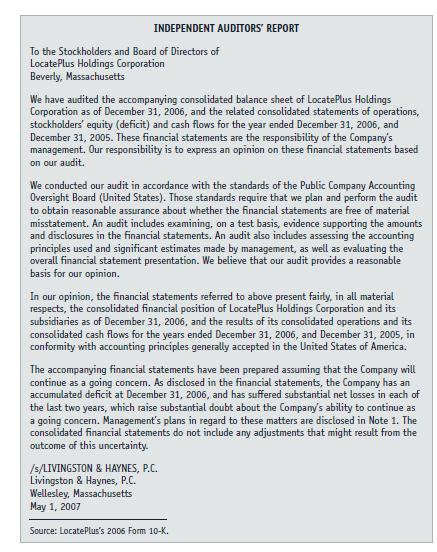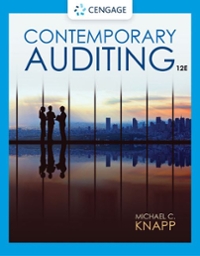LocatePlus had two principal revenue streams. Slightly more than one-half of the company's annual revenue was generated
Question:
LocatePlus had two principal revenue streams. Slightly more than one-half of the company's annual revenue was generated by selling direct, one-time access to its large database. The company's other major revenue source involved so-called channel partner arrangements. A channel partner paid LocatePlus a fixed monthly royalty in exchange for unlimited access to its database. Channel partners were typically large government agencies or corporations.To enhance their company's disappointing operating results, two LocatePlus executives created a bogus channel partner in 2005. Those two executives were James Fields, the company's chief financial officer (CFO), and Jon Latorella, the company's chief executive officer (CEO). The fictitious company, Omni Data Services, allegedly paid several hundred thousand dollars in monthly royalties to LocatePlus. These royalties accounted for $3.6 million of LocatePlus's 2005 revenues of $11.6 million and $2.7 million of the company's 2006 revenues of $12.2 million.Despite these bogus revenues, LocatePlus continued to post large losses each year.In 2004, the company had reported a net loss of $7.5 million. In 2005 and 2006, the company reported net losses of $5.6 million and $5.9 million, respectively.LocatePlus used a series of sham transactions, including fraudulent cash transfers, to make it appear that the Omni Data revenues were genuine. The principal purpose of these sham transactions and the corresponding fraudulent journal entries was to deceive LocatePlus's independent auditors. Because LocatePlus was a public company, it had to file audited financial statements annually with the SEC.

Questions1. The PCAOB’s auditing standards identify auditors’ responsibilities when addressing the possibility that fraud has materially impacted a public company’s financial statements. Which of those responsibilities did the L&H auditors fail to comply with during the 2005 and 2006 LocatePlus audits? For each item that you listed, explain how the L&H auditors failed to fulfill that responsibility.2. What is the purpose of predecessor–successor auditor communications? Which party, the predecessor or successor auditor, has the responsibility for initiating those communications? Briefly summarize the information that a successor auditor should obtain from the predecessor auditor.3. What are the primary responsibilities of a “concurring partner” under current U.S. auditing standards?4. What is the nature and purpose of a “letter of representations”? Comment on the quality or strength of the audit evidence yielded by a letter of representations.
Step by Step Answer:






